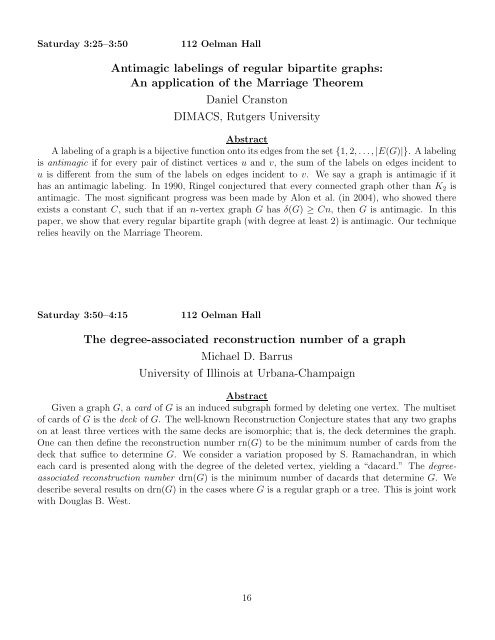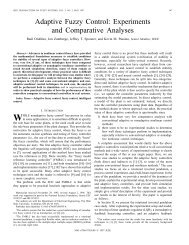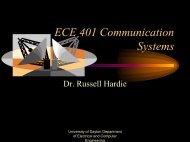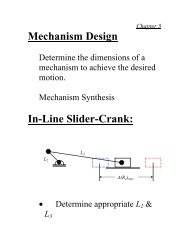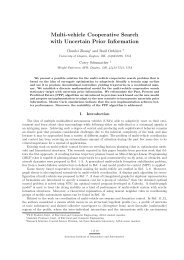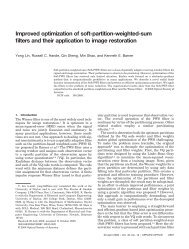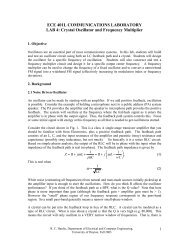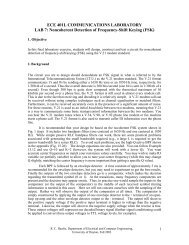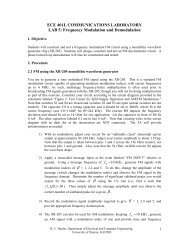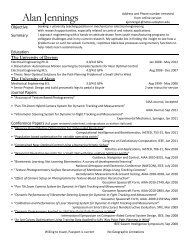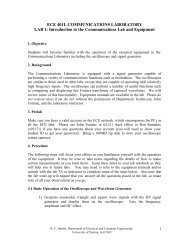here - University of Dayton : Homepages
here - University of Dayton : Homepages
here - University of Dayton : Homepages
You also want an ePaper? Increase the reach of your titles
YUMPU automatically turns print PDFs into web optimized ePapers that Google loves.
Saturday 3:25–3:50 112 Oelman Hall<br />
Antimagic labelings <strong>of</strong> regular bipartite graphs:<br />
An application <strong>of</strong> the Marriage Theorem<br />
Daniel Cranston<br />
DIMACS, Rutgers <strong>University</strong><br />
Abstract<br />
A labeling <strong>of</strong> a graph is a bijective function onto its edges from the set {1, 2, . . ., |E(G)|}. A labeling<br />
is antimagic if for every pair <strong>of</strong> distinct vertices u and v, the sum <strong>of</strong> the labels on edges incident to<br />
u is different from the sum <strong>of</strong> the labels on edges incident to v. We say a graph is antimagic if it<br />
has an antimagic labeling. In 1990, Ringel conjectured that every connected graph other than K2 is<br />
antimagic. The most significant progress was been made by Alon et al. (in 2004), who showed t<strong>here</strong><br />
exists a constant C, such that if an n-vertex graph G has δ(G) ≥ Cn, then G is antimagic. In this<br />
paper, we show that every regular bipartite graph (with degree at least 2) is antimagic. Our technique<br />
relies heavily on the Marriage Theorem.<br />
Saturday 3:50–4:15 112 Oelman Hall<br />
The degree-associated reconstruction number <strong>of</strong> a graph<br />
Michael D. Barrus<br />
<strong>University</strong> <strong>of</strong> Illinois at Urbana-Champaign<br />
Abstract<br />
Given a graph G, a card <strong>of</strong> G is an induced subgraph formed by deleting one vertex. The multiset<br />
<strong>of</strong> cards <strong>of</strong> G is the deck <strong>of</strong> G. The well-known Reconstruction Conjecture states that any two graphs<br />
on at least three vertices with the same decks are isomorphic; that is, the deck determines the graph.<br />
One can then define the reconstruction number rn(G) to be the minimum number <strong>of</strong> cards from the<br />
deck that suffice to determine G. We consider a variation proposed by S. Ramachandran, in which<br />
each card is presented along with the degree <strong>of</strong> the deleted vertex, yielding a “dacard.” The degreeassociated<br />
reconstruction number drn(G) is the minimum number <strong>of</strong> dacards that determine G. We<br />
describe several results on drn(G) in the cases w<strong>here</strong> G is a regular graph or a tree. This is joint work<br />
with Douglas B. West.<br />
16


